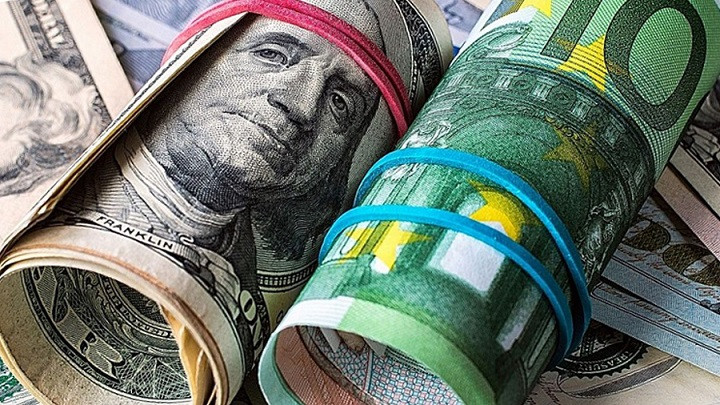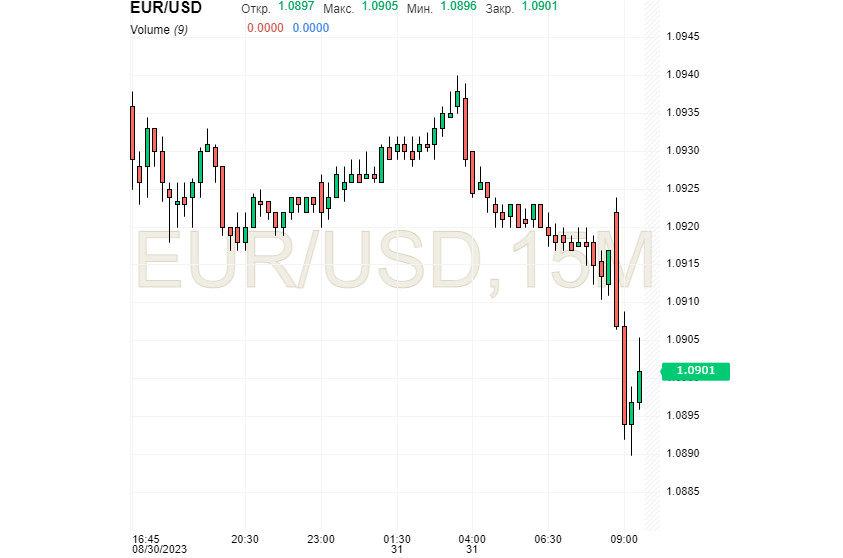
Unlike its American counterpart, the European currency finds it more challenging to conquer and keep new highs. Currently, the euro remains relatively firm within the broad price range of 1.0850–1.0930 although the situation could change at any moment. In the meantime, despite a brief decline, the US dollar is gathering strength for another ascent.
The American currency experienced a downturn following the release of weak data on US economic growth. Moreover, reports on the US labor market from ADP also fell short of expectations. According to the US Department of Commerce, the national economy grew by 2.1% year-on-year in the second quarter of 2023. The initial GDP growth estimate projected an increase of 2.4%.
Analysts attribute slower economic growth to a reduction in private investments in inventories and fixed capital assets. However, these factors were partially offset by increased government spending in the US, consumer expenditures, exports, and housing investments.
Current reports indicate that the Personal Consumption Expenditures (PCE) Price Index grew by 2.5%. Meanwhile, the core PCE index increased by 3.7%, slightly below the previous projection of 0.1%. According to ADP data, the growth in private-sector employment in the US slowed more than expected. Regarding private sector employment in the country, this indicator increased by 177,000 in August, falling slightly short of the forecast of 195,000 jobs.
Amid this backdrop, the greenback notably weakened, while the euro took advantage of the situation and significantly appreciated. However, the euphoria was short-lived: on Thursday, August 31, the euro slightly declined against the American currency. Analysts and market participants continue to evaluate the new set of economic statistics from Europe and the US.

On Wednesday, August 30, the preliminary estimate of annual inflation in Germany for the current month was published. According to reports, consumer prices in the powerhouse of the Eurozone slowed to 6.1% in annual terms. It is worth noting that this indicator was at 6.2% in July.
Inflation remains the key driver of European financial markets, experts emphasize. Against this backdrop, the excessively high level of consumer prices in Germany, which was unaffected by the prolonged drop in import prices, raises concerns among analysts. Notably, in July, the index of import prices in Germany decreased by 0.6%, marking the tenth consecutive month of decline. In such a scenario, the potential for further tightening of the ECB's monetary policy is in question.
On Thursday, a preliminary estimate of inflation in the Eurozone for this month will also be published. According to analysts, there is currently a high probability of inflation slowing down to 5.1% from the previous 5.3%. Later, the US Department of Labor will release data on the number of initial jobless claims. Preliminary forecasts suggest that this indicator increased by 5,000 to 235,000 claims in a week.
The current environment is favorable for the single European currency. By the end of the week, the EUR/USD pair gained 1.5%, reaching the level of 1.0940 at one point. Current macroeconomic data from both sides of the ocean demonstrated a cooling in pro-inflationary processes in the US and brought positive surprises from Europe. Against this backdrop, the likelihood of the ECB raising the key rate by 25 basis points at the September meeting increased to 60%.
Despite the positive macroeconomic data from the Eurozone, the rapid rise in the euro caught markets by surprise. As a result, EUR/USD found support during corrections towards the 200-day moving average and briefly resumed the uptrend recorded at the end of 2022. However, the euro failed to maintain its positions gained earlier. On Thursday morning, August 31, EUR/USD, which was confidently trading in the range of 1.0920–1.0922, slipped to a lower value of 1.0901.

According to analysts, such sharp leaps in EUR can be attributed to major market players. Experts once again draw attention to the overbought nature of the single European currency, which increases its volatility before experiencing a decline. Analysts are confident that in the event of deteriorating macroeconomic statistics from the US, the euro will receive a new driver for growth. As evidence of their forecast, experts point to the situation observed in July when the rise to 1.1275 began immediately after the publication of US Department of Labor data, which turned out to be slightly worse than expected.
If this scenario is repeated, this could prompt the rise of EUR up to the key level of 1.1000. However, the determining factor will be the US inflation report scheduled for September 13. According to analysts' estimates, after the publication of this data, the market will sharply reverse upwards and then turn downwards. Riding this wave, EUR/USD is capable of climbing to 1.1000 and setting new yearly highs.
Nevertheless, everything could unfold differently, depending on the nature of the data and the market's reaction to it. Thus, in the short term, the euro may emerge as the winner while the dollar might lose. However, in the long run, the greenback is expected to surpass its European rival. In the long-term planning horizon, the pair could swiftly descend after a brief uptick. Many analysts are inclined towards the scenario of a reversal in EUR/USD that will lead to parity by the end of this year.
 English
English 
 Русский
Русский Bahasa Indonesia
Bahasa Indonesia Bahasa Malay
Bahasa Malay ไทย
ไทย Español
Español Deutsch
Deutsch Български
Български Français
Français Tiếng Việt
Tiếng Việt 中文
中文 বাংলা
বাংলা हिन्दी
हिन्दी Čeština
Čeština Українська
Українська Română
Română

